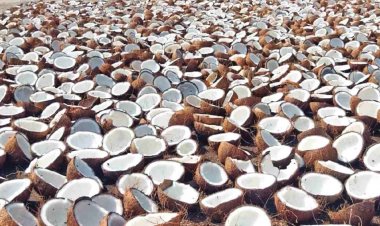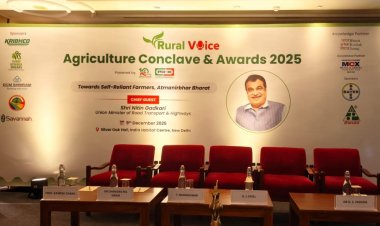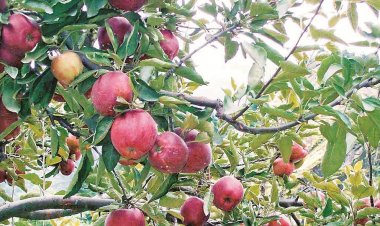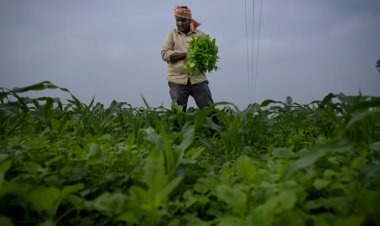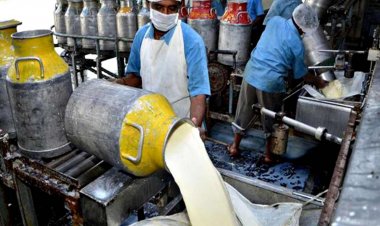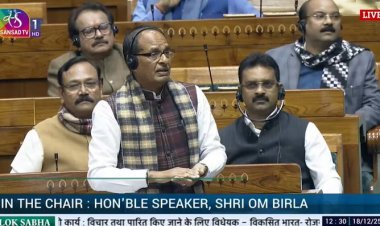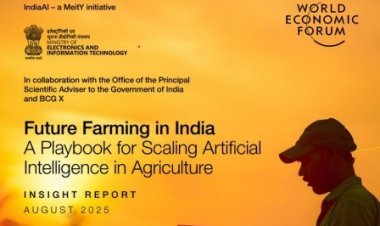Food inflation a major challenge; need to focus on addressing it: RBI
A paper released by the RBI says that food inflation and volatility in prices still remain a challenge, which requires higher public investment, storage infrastructure and promotion of food processing. Although the share of agriculture has been declining in the overall gross value added (GVA) of India, it continues to grow in absolute terms. The agriculture sector could withstand the COVID-19 shock and registered an above-average real growth of 3.6 per cent in 2020-21, even as the overall economy (real GVA) contracted by 6.2 per cent.
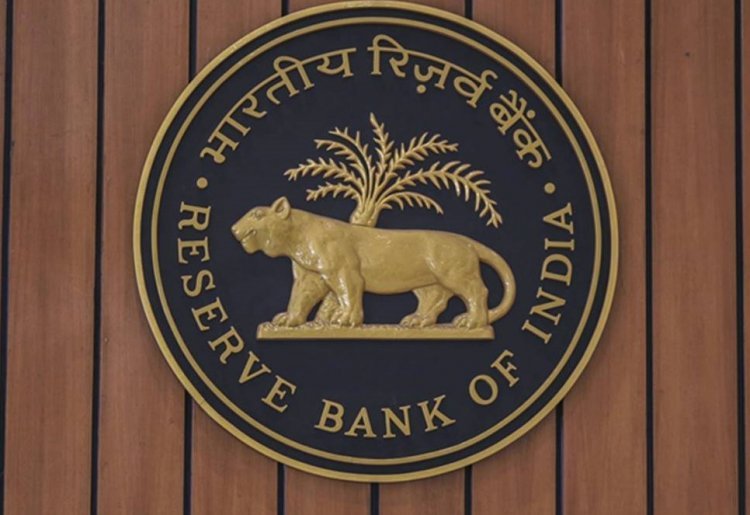
Despite the success in terms of production that has ensured food security in the country, food inflation and volatility in its prices remain a challenge, which requires higher public investment, storage infrastructure and promotion of food processing. This is what the Reserve Bank of India (RBI) says in a paper titled “Indian Agriculture: Achievements and Challenges” that has been published in its January 2022 bulletin.
The paper says, “Although the share of agriculture has been declining in overall gross value added (GVA) of India, it continues to grow in absolute terms.” According to the Periodic Labour Force Survey (PLFS) 2020, agriculture still employs 49 per cent of the total households. The agriculture sector could withstand the COVID-19 shock and registered an above average real growth of 3.6 per cent in 2020-21, even as the overall economy (real GVA) contracted by 6.2 per cent.
Significant increase in foodgrains production and horticulture
Mentioning the achievements of Indian agriculture, the paper says that the average production of foodgrains has increased significantly in the last decade. This has been due to higher agriculture credit, public and private investment, increased usage of quality seeds and fertilisers, expansion of acreage under irrigation, etc. The policy of Minimum Support Price (MSP) led to boost the production of pulses, too, along with the cereals, resulting in consecutive record production of foodgrains since 2016-17. The other achievement is in horticulture. Horticulture production has outpaced foodgrains production since 2012-13 and it currently accounts for around 35 per cent of total value of crop output in the agriculture sector.
Animal husbandry and fish production means of livelihood
The allied sector has also gained importance in the last decade. Animal husbandry and fish production have registered strong growth. Indian livestock sector attained a record growth of 6.6 per cent during 2010-19 with India emerging as a major producer of milk, egg and meat in the world. With operational landholding size declining gradually, livestock is emerging as an important source of stable livelihood. This is true not only for the small and marginal farmers but also for the landless labourers.
India’s share goes up in world agricultural trade
With an increase in production of various agricultural commodities, India has also emerged as a major player in their global trade. Its share in global trade of agricultural and allied sector products has doubled from 1.1 per cent in 2000 to 2.2 per cent in 2018. The agriculture and allied sector contributed to 14.2 per cent of the total exports from India in 2020-21. Cereals have the highest share (22.3 per cent) in India’s farm export basket. The share of animal husbandry in India’s farm exports has almost doubled from 10.4 per cent to 20.2 per cent during this period. The shares of marine and horticulture products have remained almost stable at about 18 per cent each. But the export shares of oilseeds and tobacco and beverages have come down significantly over the years.
Climate change impacts productivity
Besides mentioning these achievements, the RBI has also enumerated the challenges. The climatic factors continue to have a significant impact on the agricultural productivity in India. Rising temperature along with increased occurrences of extreme weather conditions have made climate change a major threat to Indian agriculture and productivity loss. Season-wise analysis shows that months pertaining to the Rabi season (October to February) have recorded maximum changes in rainfall and temperature. The maximum-temperature impact is more prominent during the Kharif season while the minimum-temperature anomalies impact the Rabi crop yields more.
Increasing pest and disease attacks
It is climate change that has brought increasing pest and disease attacks, leading to greater crop damage. The increased incidence of extreme weather conditions like flood and droughts coupled with unseasonal rains also poses a serious threat to the standing crops. Small and marginal farmers are more prone to these impacts. Under such scenario, climate-risk-mitigating policies can play an important role in insuring farm income. The article suggests other measures such as expediting climate-proofing projects under the Mahatma Gandhi National Rural Employment Guarantee Scheme (MGNREGS), reducing greenhouse gas emissions from agricultural production and promoting diversification of the consumption basket towards more climate-resistant pulses and coarse grains.
The problem of agricultural waste management
Agricultural waste management poses another major challenge as crop residue burnings in the northern states increase the air pollution levels, create health hazards and contribute to global warming. At an all-India level, crop residue burning touched a figure of 48.6 million tonnes during 2018 and out of this, 50 per cent was contributed by paddy alone. In fact, the gap between the Kharif harvest and the Rabi sowing is short in the northern states. The absence of crop residue management options and the high cost of labour induce the small and marginal farmers to go for in situ residue burning. Solutions have been suggested by experts, but it is more important to look for cost-effective and sustainable solutions.
Fragmented landholdings impact productivity
The size of landholdings is also a problem. Over the years, the number of farm holdings in India has increased but the area under farming has come down. As a result, the average size of holdings has decreased substantially. The average size of landholding in the country has come down to 1.08 hectares in 2015-16 from 2.28 hectares in 1970-71. Marginal and small holdings together constitute 86 per cent of total holdings in India. Such fragmented land occupancy structure makes it almost impossible for farmers to viably invest in tube wells, drip irrigation, storage or bulk inputs. Land consolidation is thus important to drive higher efficiency. Unfortunately, various constraints such as poor quality of land records, complex administrative procedures and restrictions on transferability of land rights prevent this from becoming possible. RBI feels there is a need for consolidation of landholdings through land market reforms to increase farm productivity in the country.
49 per cent labour force in agriculture
As per Census statistics, the rural population in India stands at 833 million, constituting almost 68 per cent of the total. While the agriculture sector engages 49 per cent of the total labour force in the country, its contribution to overall GVA is only 17 per cent, which shows the overdependence of Indian labour force on agriculture. In a survey by the National Sample Survey Organisation (NSSO), around 40 per cent of the farmers have expressed willingness to move out of farming if they find suitable alternatives.
The problem of volatility in food inflation
Agricultural production in India is still heavily dependent on rainfall. Adverse climatic conditions like drought, flood and unseasonal rains tend to disrupt both aggregate supply and supply chains, imparting large volatility to food inflation trajectory. While the overall level of food inflation has moderated since 2014-15, backed by a series of record production of foodgrains and horticultural crops as well as lower global food prices, the volatility in food inflation continues to remain high. The contribution of food, especially vegetables, to volatility in headline inflation is significantly higher than non-food items. One of the reasons for this is the perishable nature of vegetables. But even non-perishables such as pulses and cereals have exhibited considerable volatility. Measures like minimising post-harvest losses, scaling up storage infrastructure, development of food processing industry and upgrading food safety have been suggested to prevent this volatility. Public and private sector investment can play a critical role to build up the agricultural infrastructure required for efficient post-harvest practices, says the paper.



 Join the RuralVoice whatsapp group
Join the RuralVoice whatsapp group



















